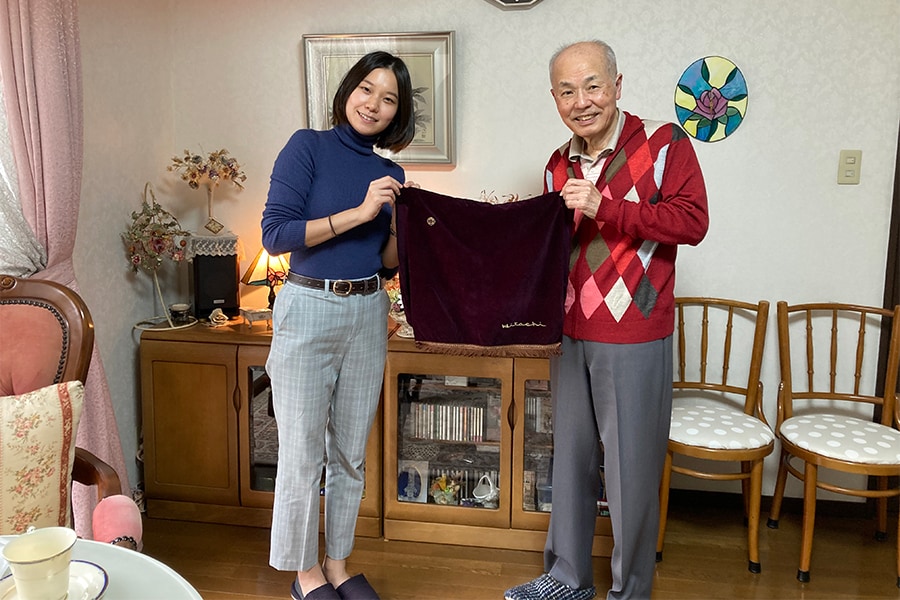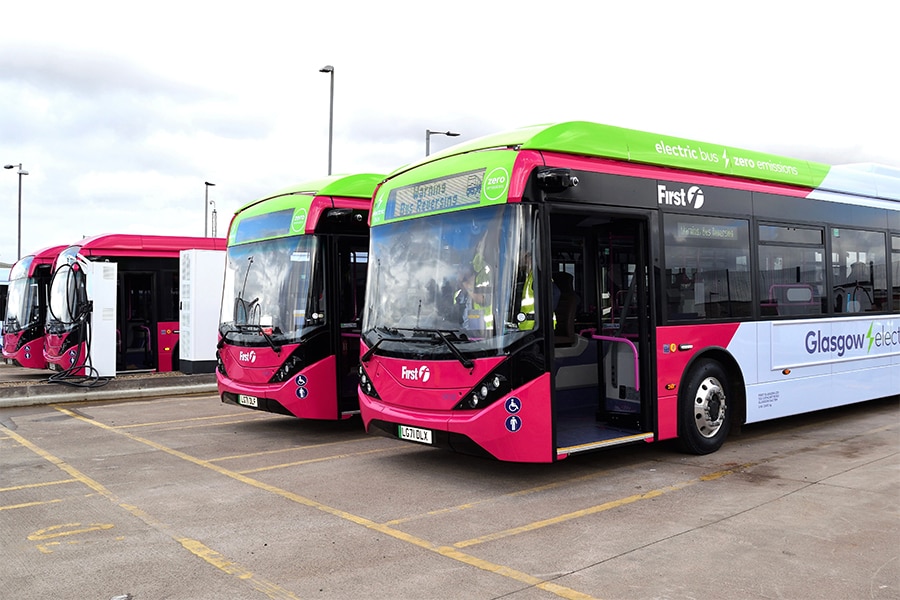Re-discovering Hitachi: Memories of Hitachi TV and the Japanese Economic Miracle
Mar. 24, 2023
Urara Nagaoka
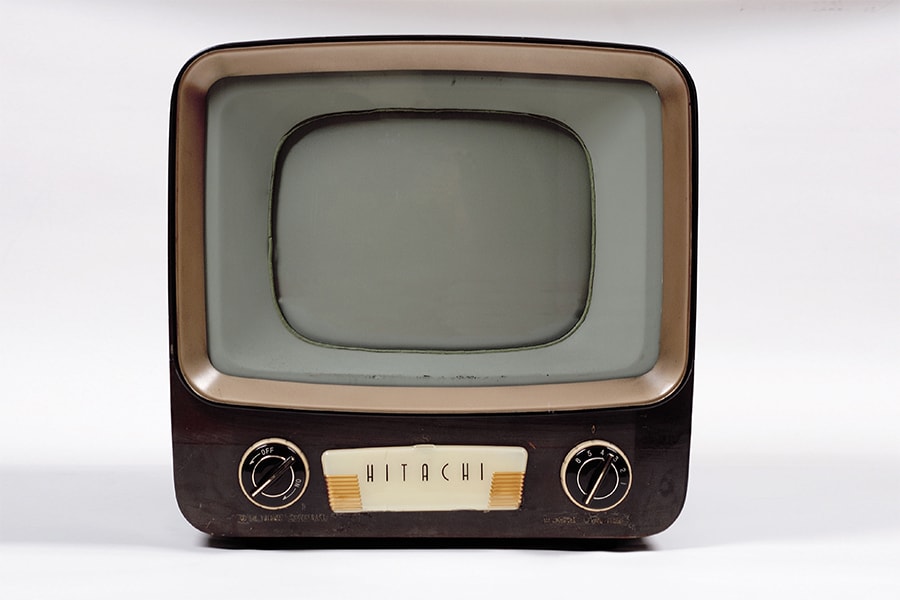
"Social Innovation," Hitachi's owned media, showcases Hitachi initiatives, cutting-edge technology, and business trends.
One day, an unusual inquiry was received from one of such readers. They found a "TV cover" that was included with a Hitachi TV manufactured in the 1950s, and they wanted to know if Hitachi would like to have it.
The editor, who was born in the 1990s, had never heard of the word "TV cover" and had no idea what it was. Thus, thinking that the TV cover might have historical value, the editor decided to jump on a train from Tokyo Station and go see the actual item.
The day the first TV arrived
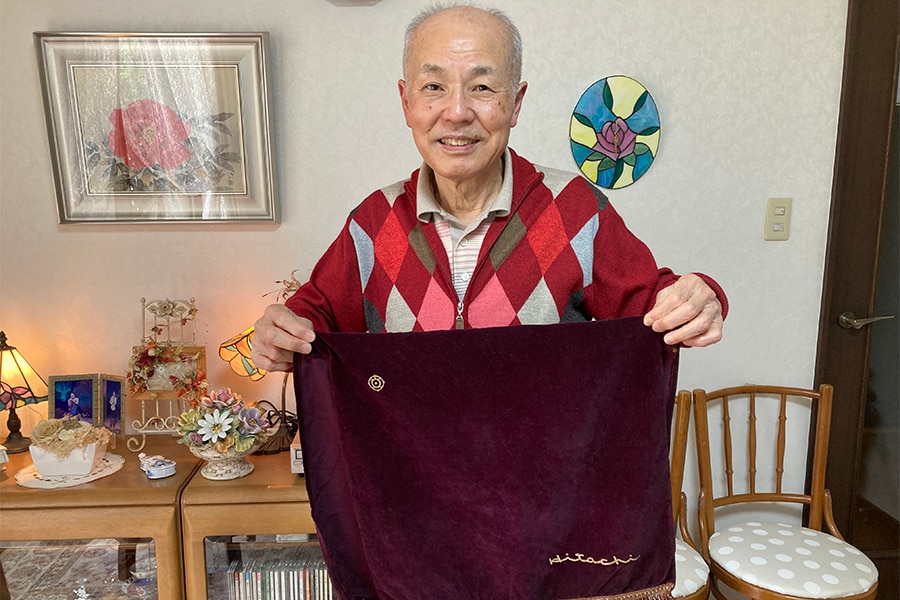
The editor headed for Kani City in Gifu Prefecture to visit the home of Mr. Takasumi Fujii, 77, who had sent the inquiry. Mr. Fujii greeted the editor with a smile and a dark red velvet cloth in his hands. In the corner of the cloth was a now defunct Hitachi logo printed in gold.
According to Mr. Fujii, the TV cover was intended to protect the cathode-ray tube from direct sunlight and to prevent dust from adhering to it due to static electricity, and was an accessory that came with his family’s first TV set that they purchased when he was 10 years old. Mr. Fujii says the TV cover was used to cover the front and top of the TV.
“This cover came with the Hitachi black-and-white TV my family purchased at the time. It was the first TV that my father, who was an elementary school teacher, purchased, and I remember that he bought it at an electronics store in town that was owned by the family of one of his students. From the day the TV arrived, it became a routine for the entire family to gather in front of the screen at mealtimes.”
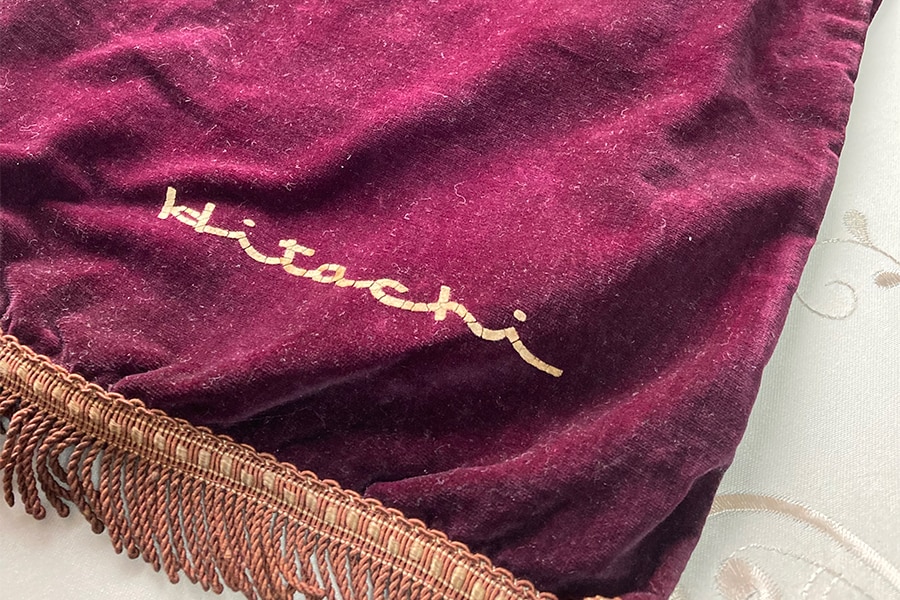
Television broadcasting began in Japan in 1953. Three years later, in 1956, the first ever Hitachi TV was born. The following year, 1957, mass production of the first Hitachi TV “F100” began. 1959 saw the wedding of the crown prince, the future Emperor, to Michiko Shoda, the future Empress, and the demand for TVs to watch the parade celebrating the wedding increased.
“I still remember watching the wedding of Their Majesties and the Tokyo Olympics on TV. I was excited to see those social events on TV.”
TV as a symbol of family gatherings
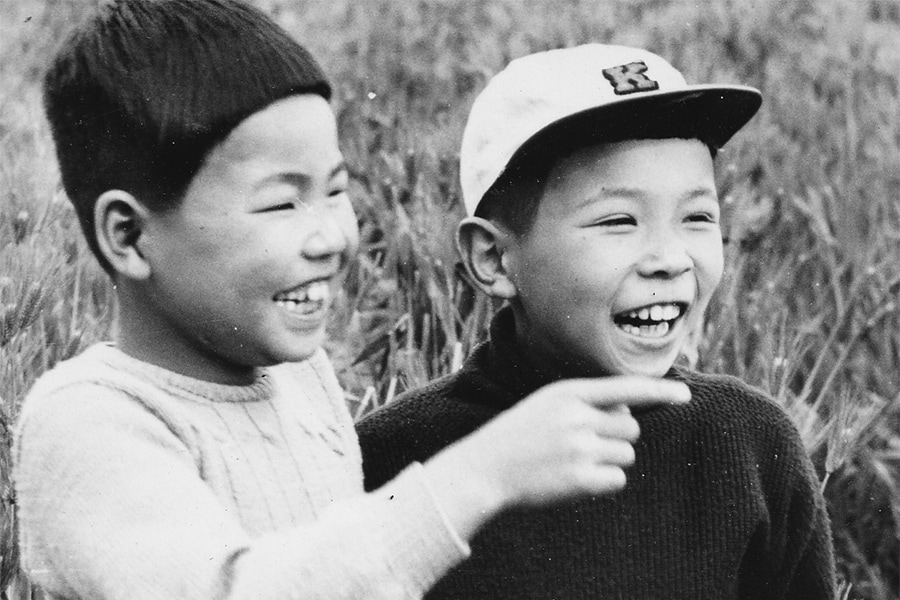
Mr. Fujii said that, when the family gathered together on weekends, the TV was always on. He was hooked on kids shows, such as "Gekko-Kamen" and "Kaiketsu Harimao," which aired on Sundays.
“In those days, when you went to the movie theater, there was a curtain in front of the screen, and the curtain would go up as soon as the show started. Our TV also had a cover, so every time I turned on the TV, I felt excited, as if a movie was about to start.”
Color TV broadcasting began in 1960, and the Fujii family eventually replaced their black-and-white TV with a color TV, but decided to keep the cover in case it could be used for something else.
“Before I knew it, I was using the cover as a dust cover for my hobby of radio-controlled models. Decades have passed since then, but the other day, when I was sorting out my shed, I found this cover. Thinking it might be of historical value, I contacted Hitachi," said Mr. Fujii.
Hitachi’s roots continuing to be passed down
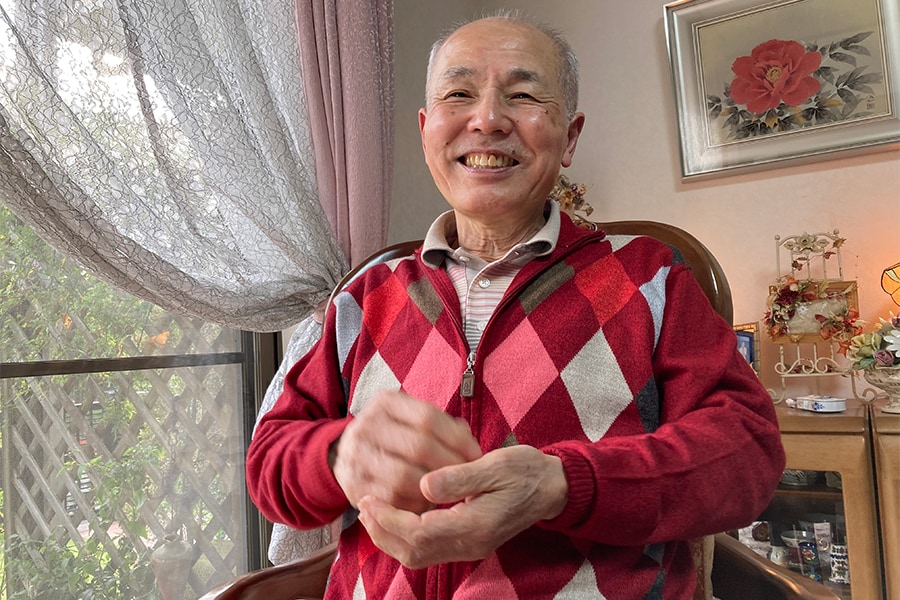
In addition to televisions, Mr. Fujii says he has used other Hitachi home appliances in his house, such as a washing machine. When he was asked what his image of Hitachi was, he replied:
“I have always had the impression that Hitachi was known for its motors. When I visited a power plant as a child on a field trip, I remember seeing the Hitachi logo on a gigantic motor. I have always had the same impression of Hitachi as a reliable company that not only makes home appliances but that also supports society in various ways.”
Hitachi was founded in 1910 to repair foreign-made motors, and Mr. Fujii's words showed that the company's roots are still passed on today through its products and services. Although times have changed and Hitachi ceased manufacturing of televisions in 2018, the company continues to support people's lives through a variety of products and services that utilize digital technologies.
After meeting with Mr. Fujii, the editor, touched by Hitachi's involvement with society during the Japanese economic miracle, set out on her way back to Tokyo with a renewed desire to continue conveying the connections between Hitachi and society.
